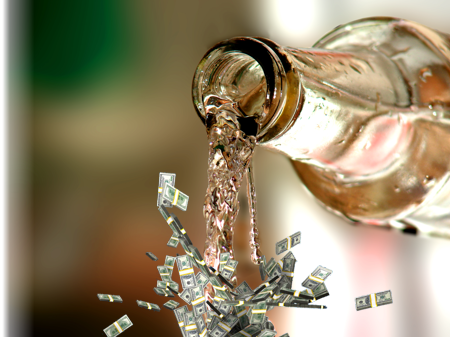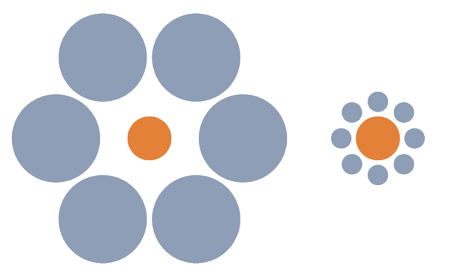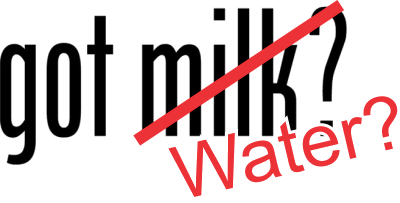August 30, 2016
4 Reasons Why Water is Not Worth it - The Pricing Problem

Imagine going into a fast food joint. You ask for the price of a burger and you are told it is $1,000 per 1,000 burgers.
"It's a bargain! We have a sale going on" the server says. "Drinks are cheap too," she adds. "It costs only $10 per gallon for the beverages, and the ice cream is only $2.50 per liter."
You look on puzzled. Why on earth did she just give you the price of beverages and ice cream in different units when they cost the same thing, you wonder?
"How much are the chicken nuggets?" you ask.
"We don't call those chicken nuggets" the server replies. "We call them 'mashed up chicken crap' – that's what they really are, you know."
"Those are $5 for a pack of 10, or as my pricing sheet says, its $500 per 1,000 pieces."
Absurd as this example might seem, this is exactly what we do in the water industry. Here are the 4 major pricing problems we have in the industry.
Water Pricing is Not Relatable
Pricing must be relatable – that is marketing 101. When we price in units of $/1,000 gals we are using a unit of consumption that is not natural to a consumer. How many people can conceive of a 1,000 gallons of water? Is that the size of a swimming pool, or a bath tub? How many cups of water make up 1,000 gallons? The relevance and relatability principle is what makes jewelers sell diamond in carats and not pounds, gold in ounces and not tons and oil in barrels and not gallons. What do the marketing pros do? Well, they sell water by the bottle, or by the liter – both relevant and relatable consumption units. No wonder, bottled water at about $0.25 to $1 per liter (i.e., about $1,000 to $4,000 per 1,000 gallons), costs about 200 to 800 times more than tap water, which is priced at about $5 per 1,000 gallons on average!

Which orange circle is bigger?
Comparing them is difficult when their surroundings are different.
(They are actually the same size.)
Water Pricing Lacks Consistency
Water is a global industry. You would not know that if you simply looked at how we price water. In the US, the price is in $/1,000 gallons. In the rest of the world it is in $/m3. 1,000 gallons is about 4 times larger than one m3, so off the bat, there is a 4 fold difference between US and global water prices, at face value. That's not all. Water rights are priced in $/acre-ft. (what the heck is that?). And then of course, bottled water gets sold by the liter or the gallon.
Cost Focus vs Value Focus
Water has always mostly been managed by public utilities that were for the most part okay with operating at a loss. In fact, for most of the last century, water was priced to simply allow utilities to cover their operating cost. The result was a focus on "visible" operating costs and the neglect of buried infrastructure like collection and distribution system assets – pipes, pumping stations, etc. Now that governments are finding it difficult to keep up with water treatment costs and private players are coming in to manage operations at some reasonable return, shifting to a value focus is challenging.
Poor Value Communication
It's damned hard to sell water. Everyone needs water, but most people also believe that they already pay too much for water. People pay more for cable than they do for water. When I talk to folks, 9 times out of 10, they can't tell me what their water charges are, but they know exactly how much their phone charges and cable bills are. The water industry might struggle to convince rate payers to pay $5 per 1,000 gallons for clean tap water, but Coca Cola charges about $15 for a 24 X 500 mL pack of Dasani – their bottled water brand. That's a whopping $5,000 per 1,000 gallons in water pricing jargon! This price premium persists even though many consumers can't tell the difference between tap and bottled water and in many cases, there are no major quality differences between the two. The few additional steps that might be added to transform tap water into bottled water certainly don't justify up to a 1,000X premium!

Figure 1: Typical Water Treatment Steps: Drawn in Hydromantis' WatProTM Drinking Water Model

Figure 2: Water Treatment Steps for bottled water: Drawn using WatProTM Drinking Water Model
Most bottled water production starts with tap water (see Figure 1). The couple of added steps (see Figure 2) certainly cannot justify a 200 – 1,000X price premium! So, how do they pull this Jedi pricing trick off? The difference is value communication. Coca Cola and other sellers of water know how to do it. The difference is value communication. Coca Cola (Dasani), Pepsi (Aquafina) and other sellers of water know how to do it. They name their products and brand them right. Coca Cola doesn't tell you that Dasani is purified tap water. No. No. No! Pepsi doesn't just call its product "Purified Water" and end there. They name them. They brand them. They tout the benefits of the products. They package them well. And they do whatever it takes to let the world know that they have a safe, reliable, healthy product. They communicate value effectively - and that's why they command a price premium. Some of those lessons can be applied to our industry. Apart from a few news junkies, how many people know that tap water beats bottled water in a number of taste tests?
Where do we go from here?

We need an industry wide effort to get our pricing and value communication right. Water needs its own "Got Milk" moment.
For those who don't remember the "Got Milk" campaign, in the early 1990s the dairy industry was suffering from a crisis of relevance. Americans were moving milk out of their refrigerators in favor of other breakfast beverages. The industry realized it had a problem. Faced with an existential crisis, the dairy industry came together, hired a great advertising agency that conjured up the "Got Milk" campaign and reintroduced milk to America. That effort transformed milk into not just a desirable product but also a sexy product.
We need to transition from our industry's cost based mentality into a value based mentality. Utility leaders and water trade associations must embrace the language of marketing. Engineers need to give way to people who truly know how to sell and market stuff.
We must learn how to price water appropriately. We must learn how to name products. Most of all we must learn how to communicate value.
If we succeed, then water will certainly be worth it!
 Dr. Malcolm Fabiyi is President of Hydromantis USA - the leading water & wastewater process modeling & design software firm. He worked as a consultant in McKinsey & Company. Dr Fabiyi was CTO at Environmental Operating Solutions, Inc; and also led the Water & Wastewater Research & Development and Commercialization effort at Praxair, Inc. He holds numerous patents for commercialized water technologies.
Dr. Malcolm Fabiyi is President of Hydromantis USA - the leading water & wastewater process modeling & design software firm. He worked as a consultant in McKinsey & Company. Dr Fabiyi was CTO at Environmental Operating Solutions, Inc; and also led the Water & Wastewater Research & Development and Commercialization effort at Praxair, Inc. He holds numerous patents for commercialized water technologies.
He can be reached at info@hydromantis.com
